2023's Best Boxed Sets: Prince, Bob Dylan, Joni Mitchell, Jason Isbell
- Oops!Something went wrong.Please try again later.
- Oops!Something went wrong.Please try again later.
- Oops!Something went wrong.Please try again later.
- Oops!Something went wrong.Please try again later.
- Oops!Something went wrong.Please try again later.
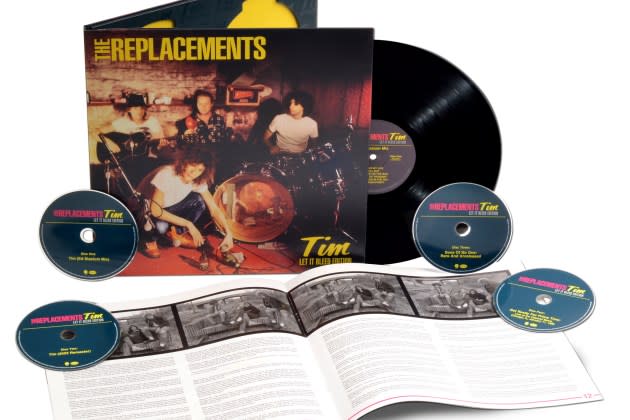
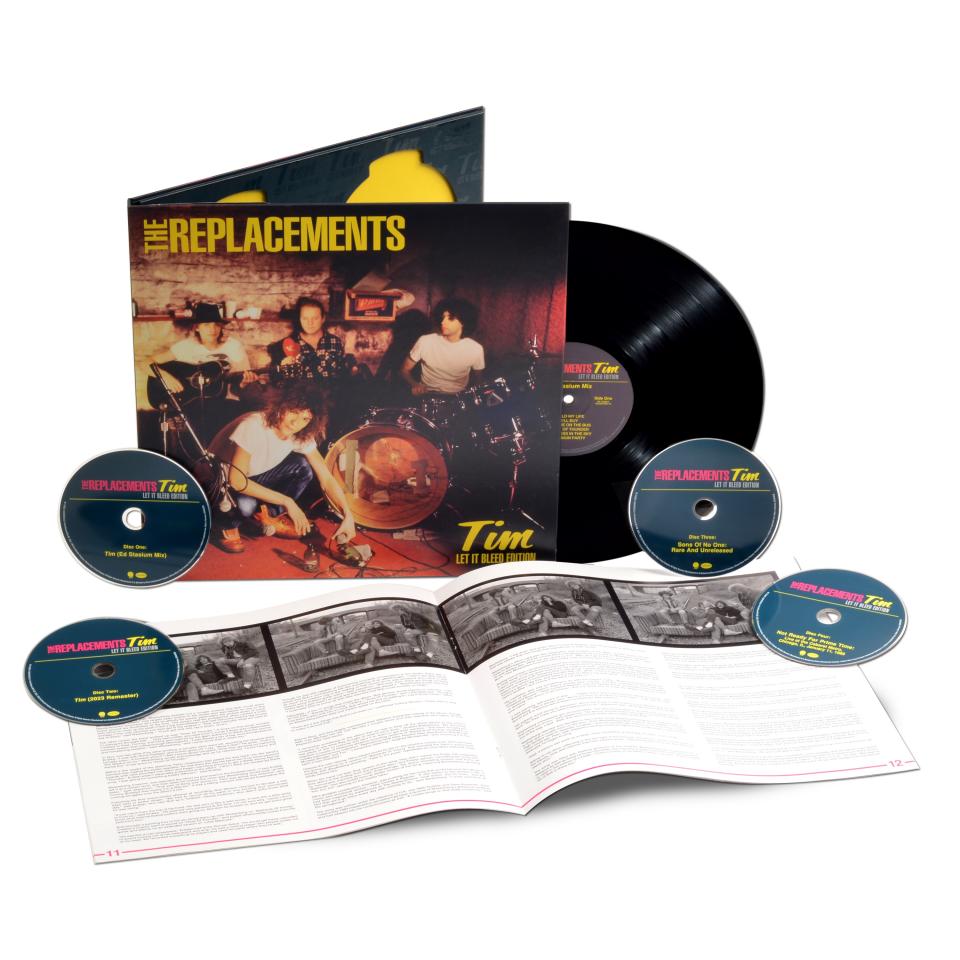
Every day is Boxing Day if you’re a physical music aficionado who prizes the multi-disc packages that are an essential part of most serious fans’ collection. Most of these are available in purely digital form, too, for the Marie Kondo decluttering cult out there. But if you really love these artists and have anything bigger than a studio apartment, you’re probably going to want to keep the box in “boxed sets.”
More from Variety
Here are a dozen-plus doorstops that rocked our writers’ world this year, including elaborate sets from Prince, Bob Dylan, Joni Mitchell, Jason Isbell, the Who, Charlie Parker, Costello/Bacharach, the “Nuggets” era and the songwriters of Stax.
The Replacements, ‘Tim: Let It Bleed Edition’
Forgive me if I shed some tears of joy over “Tim: Let It Bleed Edition,” a collection that instantly vaults nearly to the top of my list of the most essential album-centric boxed sets ever released. And also some tears of regret — that I spent more than three and a half decades enjoying one of rock’s all-time best albums while also recognizing in the back of my head that something about it sounded ever-so-slightly off. This set includes a brand new remix by Ed Stasium, who at one point had been talked about to work on the original 1985 “Tim” album; if the record had sounded like this at the time, maybe it would be even more widely regarded as a classic than it already is. Besides adding a few tantalizing extra guitar or piano licks here and there, Stasium’s mix has made the whole thing sound utterly crisp, putting the band right there with you… and not even in a reverb-y bathroom with you.
The new mix is just part of the reason to pick up the four-CD “Let It Bleed” edition, if probably the most crucial one. There’s also a disc devoted to a remastering of the original Tommy Erdelyi production, which corrects mistakes made when the album was first mastered for CD. There’s a crackling live disc, recorded at a Chicago club in ’86 during Bob Stinson’s last run with the group. And the disc of alternate versions and outtakes, most of them previously unreleased, makes for a wonderful listen by itself, including several versions of “Can’t Hardly Wait,” which Paul Westerberg found so tough to tackle that he abandoned it at the time and saved further efforts for the next record. (They’re all great, though a millimeter less great than the “Pleased to Meet Me” take.) And for fans, Bob Mehr’s nearly book-length liner notes are practically worth the cost of admission. It’s a must-have for bastards of old. —Chris Willman
Prince, ‘Diamonds and Pearls: Super Deluxe Edition’
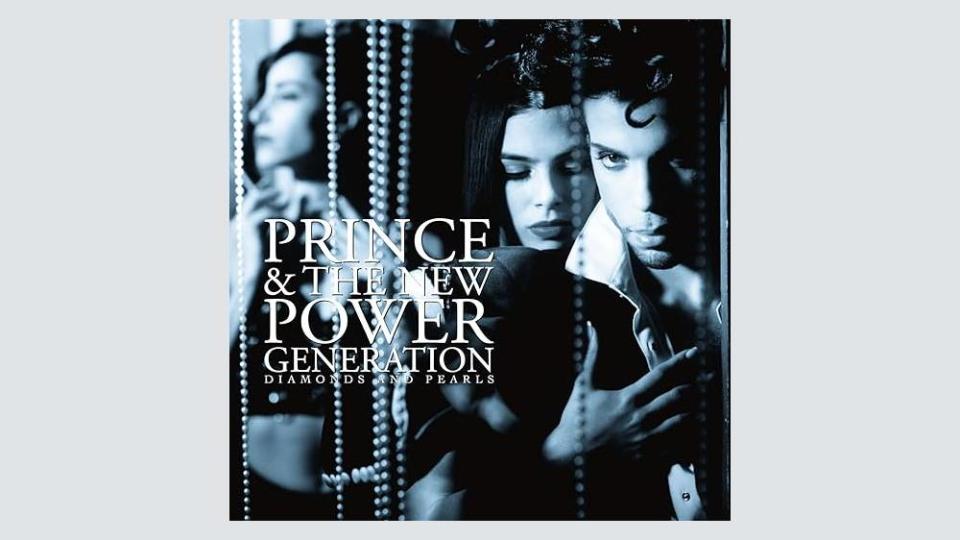
Hard as it may be to imagine, at the dawn of the ‘90s, Prince was at a make-or-break point in his career as a chart-busting superstar. It had been several years since he’d had a real hit, and his image and public statements had been confusing, to say the least. So for the first time in years, he took a strategic look at the pop landscape — a dire place in 1990 — and dramatically overhauled his look and sound with “Diamonds and Pearls,” bringing a harder-hitting, more pop-oriented sound — and, surprisingly, rapping, a genre he’d previously disparaged. It was a glossier form of R&B than anything he’d done since his first two albums, and significantly more radio-friendly.
Be all of that as it may, it worked: The resulting album, “Diamonds and Pearls,” sold millions of copies and spawned five hit singles, including the chart-topping “Cream.” So how does “Diamonds and Pearls” sound, with 30 years of hindsight and the latest in his estate’s series of massive boxed sets, filled with dozens of unreleased songs from Prince’s vaunted Vault — some of which have long been available on bootlegs, but a lot that haven’t — and an explosive full concert from 1992? Well, fresh in some cases and painfully dated in others. The singles remain classic, but the rapping was sub-par even for the era, and certain effects and synthesizer and drums sounds carbon-date the songs to 1991. In retrospect, the most innovative song here is the lead single, “Gett Off,” which suffers from some dated elements but is actually an imaginative fusion of hip-hop and house music. But at the end of the day, it’s Prince in all his glory, if nearing the tail end of the fireball of creativity that began with “Dirty Mind” and pretty much began fading here. —Jem Aswad
Bob Dylan, ‘Fragments: Time Out Of Mind Sessions 1996-1997’
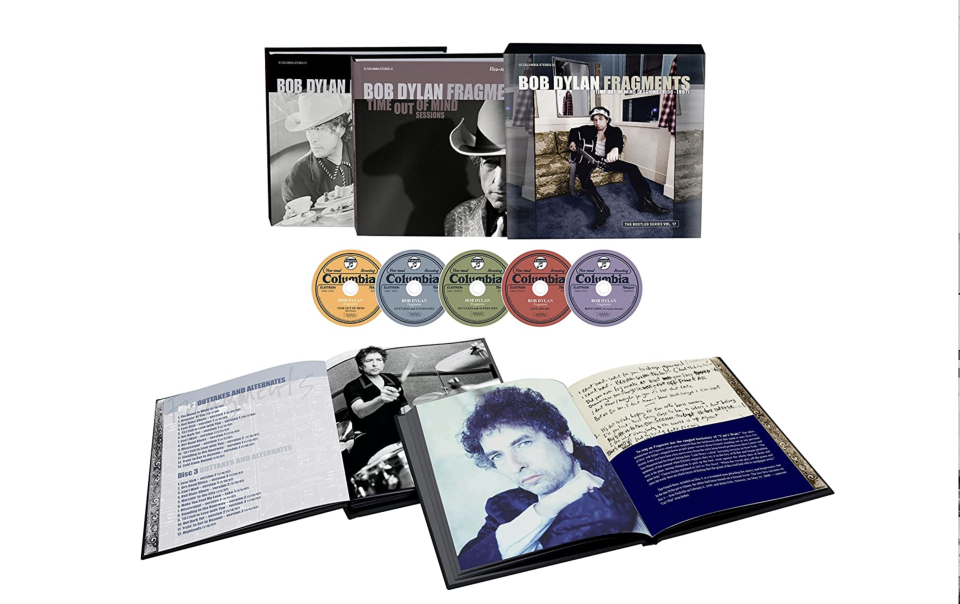
The boxed set that Bob Dylan’s camp built around the “Time Out of Mind” album has a similarity to the Replacements’ “Tim” box: for all the great outtakes and extras, the core item in the collection is a brand new remix that de-murks the original version. Now, in the case of the 1997 Dylan album, there are a lot more arguments to be had about whether the record in question needed or benefits at all from a do-over, since so many fans think producer Daniel Lanois’ sound on the beloved original was very much a feature and not a flaw. For my part, I think there’s a middle ground here: The mystery-train mood that permeated the released takes had its value, and it’s not like that version is suddenly getting erased out of existence by an alternative version being introduced. But when I want to listen to “Time Out of Mind” in the future, nine times out of 10, I’m probably going to be putting on the new mix conducted by Michael H. Brauer. It’s a revelation to hear songs this strong taken out of the swamp.
The remix is just one component of a super-deluxe set that spans five CDs or 10 discs in LP format (more condensed editions are available, of course). The additional material includes 25 studio tracks’ worth of outtakes and alternative versions, plus live versions of nearly all the material. Of note is some more rollicking stuff, like “Dirt Road Blues,” that belies the image some have of this period as being about Dylan just ringing them death-knell bells. Twenty-six years later, it’s still “Not Dark Yet,” and still getting there… but not in nearly as much of a single-minded hurry as we might’ve imagined at the time. Looking at the calendar now, hard as it is to believe, “Time Out of Mind” actually technically counts as mid-period Dylan — and as this set exhaustively proves, peak Bard, as well. —Willman
The Who, ‘Who’s Next/Life House’
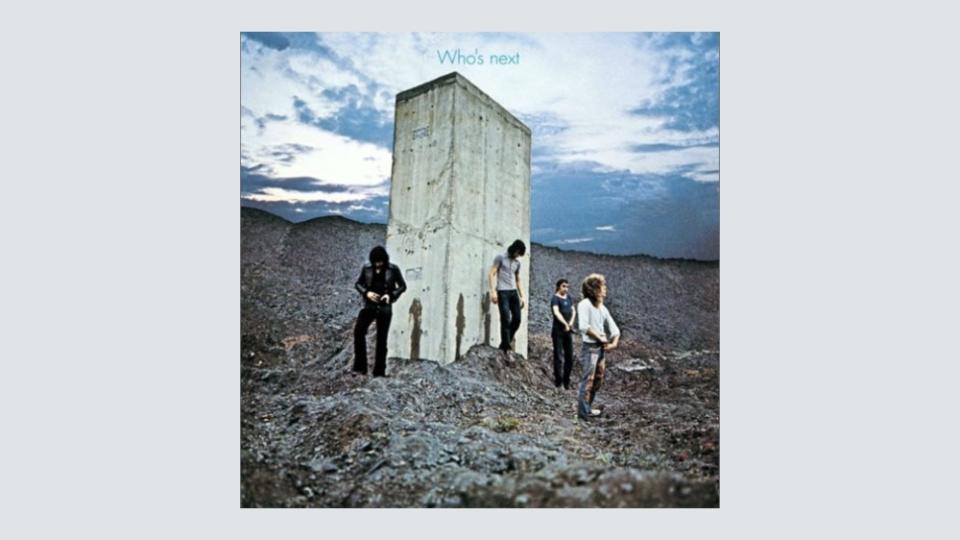
Music history is strewn with mythical great-albums-that-never-were, and after 52 years, perhaps the greatest one from the rock era — the Who’s aborted project “Life House,” from which the 1971 classic “Who’s Next” emerged — is finally getting its true day in the sun, in the form of a massive 10-CD box with a giant, fact-and-photo-filled book that takes at least six of those CDs to read. It’s everything obsessives could have hoped for, and then some: It covers the entire 1970-72 period, including tracks from an abandoned EP and a second aborted album, an even less-realized 1972 concept outing called “Rock Is Dead” that eventually morphed into Who mastermind Pete Townshend’s next masterwork, “Quadrophenia.”
“Life House” was conceived as a follow-up to Townshend’s previous opus, “Tommy.” Steeped in Eastern religion via his guru Meher Baba, Townshend attempted to marry the musical and spiritual ambitions of the late ‘60s into a project that (to vastly oversimplify) revolved around the concept that a human being’s spirit could be articulated in a musical note or series of notes. The complexity of the project (and the apparent inability of everyone except Townshend to understand it) ultimately caused him to abandon its ambitions and release “just” an album — “Who’s Next,” which, with “Won’t Get Fooled Again,” “Behind Blue Eyes,” “Baba O’Riley” and more, is indisputably one of the best albums of the rock era. But for the entire story, look no further than the $299.99 the deluxe-uber-ultra-whatever boxed set, which contains just about everything the band recorded between “Tommy” and “Quadrophenia,” with 155 tracks including multiple singles, stray tracks and previously unreleased studio outtakes (and some hilarious banter); Townshend’ elaborate demos, including several songs that haven’t seen official release; and two full concert recordings. —Aswad
Elvis Costello and Burt Bacharach, ‘The Songs of Bacharach & Costello’
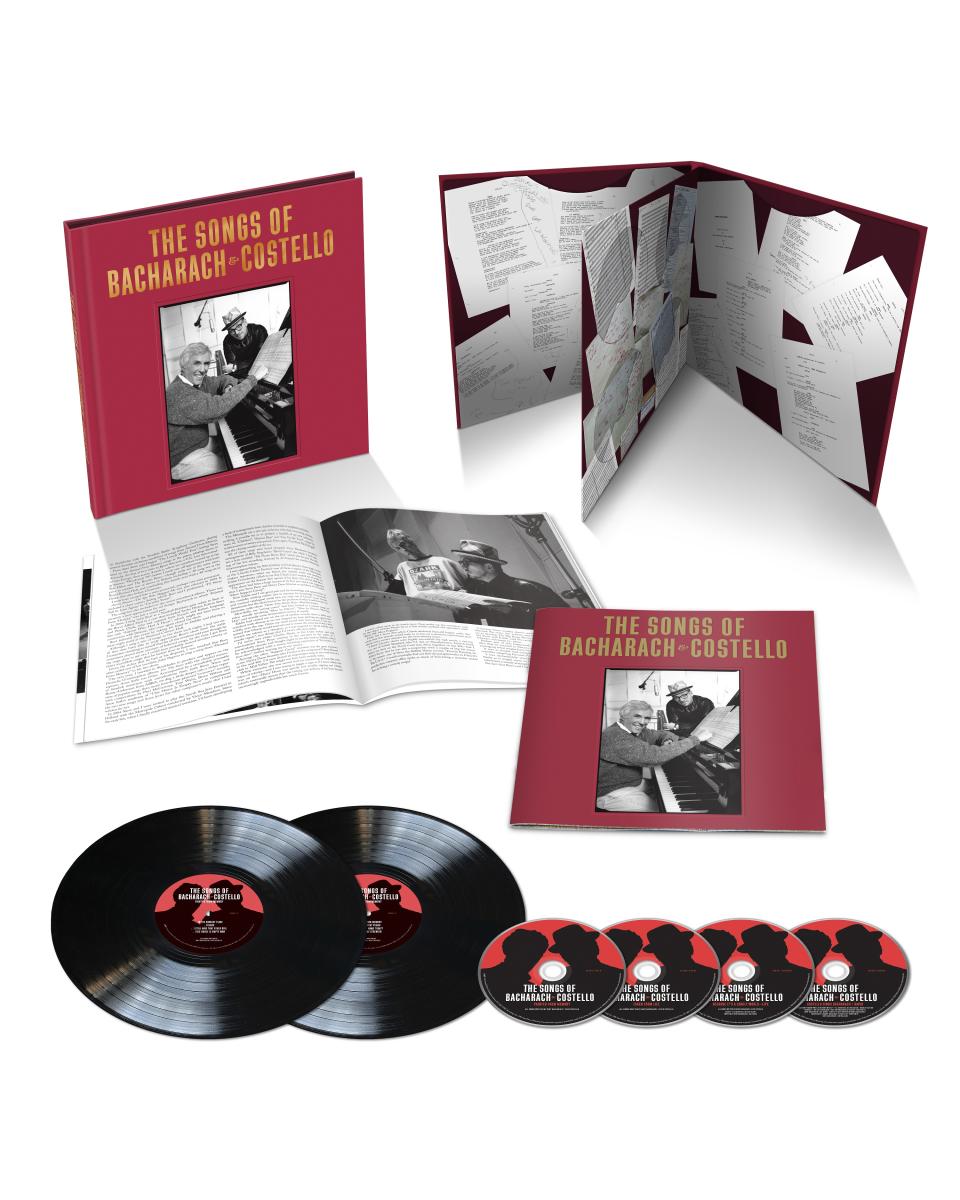
The one album that was made jointly by Costello and Bacharach, 1998’s “Painted From Memory,” has come to rightly be regarded as a modern classic — a record pegged by some at the time as too sophisticated (or something like that), but which, 25 years later, feels righteously refined in just the right measure to just about anybody who has an ear for the possibilities of pop at all. Masterpiece is not too strong a word for what seems more than ever like possibly the greatest torch-song concept album since the glory days of “In the Wee Small Hours of the Morning.” For any enthusiasts who weren’t able to obtain the sold-out Mobile Fidelity vinyl edition, a fresh two-LP edition of the original is included as a part of “The Songs of Bacharach & Costello.” But that’s almost the least of the set’s riches, which include four CDs of mostly unreleased material, plus a practically book-length essay by Costello about the history of their storied collaboration that makes a swell addendum to EC’s memoir.
That history began with Costello growing up on Bacharach songs like “I Just Don’t Know What to Do With Myself,” which he covered with the Attractions in 1977, reprised here at the start of a whole disc’s worth of his Burt covers. It’s a history that did not end with “Painted From Memory,” despite what the discography would indicate. The most essential disc here is the 16-track “Taken From Life,” which consists of songs Bacharach and Costello had written for a long-planned and finally aborted “PFM” Broadway musical, some previously issued in some form, many of them stuck in the trunk until now. A highlight from the shoulda-been musicalis “You Can Have Her,” a dramatic ballad Costello finally recorded with a full orchestra, with Bacharach in tow, not so very long before the latter legend’s death. This celebration of their fateful intersection is a must for fans of either great; most of all, “Painted From Memory” is just too grand to be consigned to mere recollection. —Willman
Joni Mitchell, ‘Archives, Vol. 3: The Asylum Years (1972-1975)’
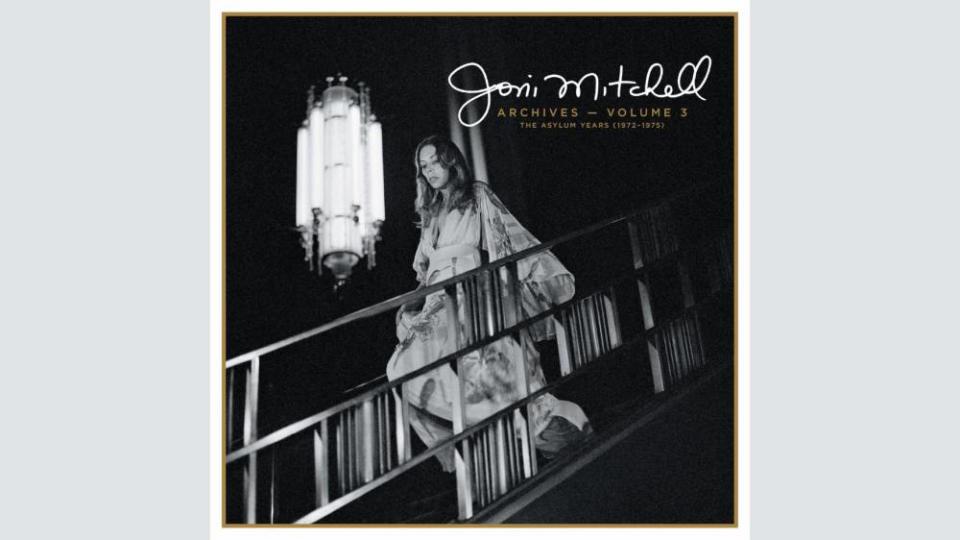
It’s almost impossible to pin down a peak era in Joni Mitchell’s sprawling, brilliant career, but if we had to pick one, it would probably be these years, from late 1971 through 1975, spanning “For the Roses,” “Court and Spark” and “The Hissing of Summer Lawns.” Those albums, of course, are among her most popular, and for her “Archives” series, Mitchell and her coproducers have plumbed her vault and come up with all kinds of jaw-dropping outtakes: multiple live recordings, demos and drastically different arrangements of long-familiar songs, and also playful sessions with James Taylor and Graham Nash and David Crosby — and versions of “You Turn Me On (I’m a Radio)” and “Raised on Robbery” recorded with Neil Young and his bands of the era (the latter two are nowhere near as good as the familiar versions but fascinating anyway).
However, most interesting is hearing her creative process unspool before your ears, from demos to alternate takes. Although many songs appear in multiple versions, we hear just how far many of them traveled before landing at their album versions — and kept traveling. Her demo of “The Jungle Line,” minus the Burundi drummers that made the song such a pioneering fusion of styles, is much less of an outlier; even her delivery of a well-worn chestnut like “Big Yellow Taxi” evolved over these years, as she reinvented the phrasing and tempos (presumably to keep herself interested); just as entertaining are her often-wacky song introductions, punctuated with her beautiful laughter. Throughout, there’s the fascination of hearing her follow the muse wherever it led — Mitchell easily could have stayed in the folkie lane that crested with “Ladies of the Canyon” and “Blue.” But instead she explored fearlessly and constantly, even abandoning the jazzy tack she’d followed here as soon as the world caught up with it — and moved into her next phase with “Hejira,” which will be covered in the next volume. —Aswad
Various Artists, ‘Written in Their Soul: The Stax Songwriter Demos’
Memphis’ legendary Stax really doesn’t require its usual comparisons to Motown, Chess, Philadelphia International Records and other historic Black labels to prove its necessity. Stax was the apex of strong Southern soul, R&B and funk throughout the 1960s and 1970s. Yet for all of its beloved, multi-charting hitmakers including Otis Redding and Sam & Dave, Stax’s behind-the-scenes songwriters — its team of melody makers, arrangers, lyricists and studio musician — rarely get their due for the label’s 160+ successes on Billboard’s Pop Top 100, let alone its nearly 250 hits in R&B’s Top 100.
The new, seven-disc box, “Written in Their Soul: The Stax Songwriter Demos” responds to that need with 146 demos written by those whose names have long been unsung (such as Mack Rice who penned “Respect Yourself” for the Staple Singers) to those who eventually had their own hits such as Mr. “Knock on Wood,” Eddie Floyd. Broken into demos previously released by artists on Stax and its imprints – Volt, Enterprise and We Produce – Stax songwriters whose artists released hits on other labels (like Atlantic), and tracks that went unreleased, “Written in Their Soul” is a not-to-be-missed archival treasure. Wilson Pickett’s smash “634-5789 (Soulsville, USA),” written by Eddie Floyd and house guitarist Steve Cropper, is just a little sweeter in demo form than its eventual salty Pickett hit. Supine vocalist Deanie Parker released a small handful of un-charting singles on Volt, but fared way better as a songwriter for Carla Thomas during the latter’s time at Atlantic with the determined “I’ve Got No Time to Lose.” And if songwriting singers such as Bettye Crutcher, Homer Banks and John Kasandra aren’t as familiar within the pantheon of deep abiding soul song’s hit-having ability, get to know them now – they’re all over the last three CDs of “Written in Their Soul.” And, for your reading pleasure, the seven-disc box comes with rich essays from archivist Cheryl Pawelski, soul scribe Robert Gordon and Stax house songwriter Deanie Parker. —A.D. Amorosi
Jason Isbell, ‘Southeastern: 10 Year Anniversary Edition’
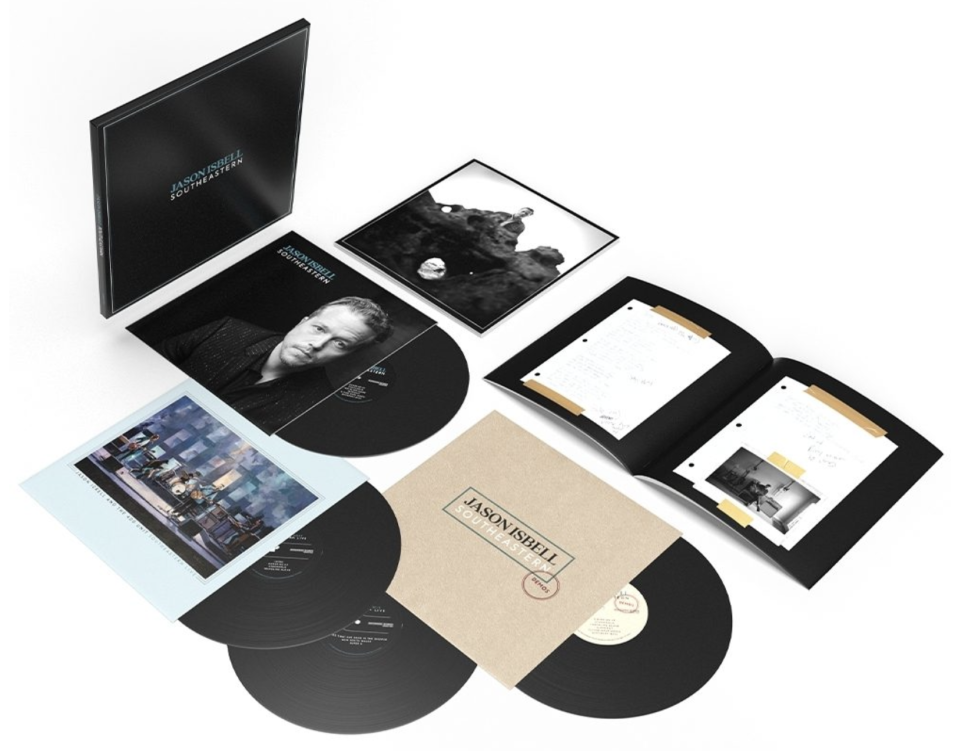
Has it really been 10 years since…? You could take this opening remark and apply it to pretty much any anniversary commemoration on this list, but it really doesn’t seem like it could have been a decade since Isbell — at that point, already a cult figure, from his Drive-By Truckers and nascent solo efforts — exploded into wider consciousness with an album that included what everyone would now recognize as his signature song, “Cover Me Up.” With it, the then-34-year-old artist became arguably the preeminent singer-songwriter of his generation… a promise he hasn’t let anyone down on with his four subsequent releases (including this year’s remarkable “Weathervanes”).
An LP slipcase includes separate jackets for three items that each deserve their own physical pomp-and-circumstance: a remastered edition of the 2013 original; a previously unreleased “Demos” disc of solo acoustic preliminaries, all in pristine studio quality; and “Southeastern Live,” recorded with the 400 Unit in a commemorative show in December 2022. Given the mostly contemplative nature of the material, the live rendering isn’t the most raging Isbell show you’ll ever hear, but fans will enjoy not just some useful rearrangements — some louder, some even quieter — but the many spoken asides that take it to a length meriting a double-LP. The most amusing has Isbell recounting his personal confession to John Prine that he thinks he ripped off “Hello in There” with “Traveling Alone,” and Prine’s cryptic response: “Oh, no, you didn’t rip off that song.”
An exclusive colored-vinyl edition of this four-LP set sold out immediately on Isbell’s website (sob), but even those of us who favor pretty colors might have to admit there’s something right about getting a set of songs as pointed, classic and beautifully sobering as “Elephant” in basic, formal black. —Willman
Thin Lizzy, ‘Live and Dangerous: Super Deluxe Edition’
Even in the freewheeling 1970s, Thin Lizzy was an utterly unique rock band — and not only because it were fronted by a towering, half-Irish/ half-Guyanese singer-bassist, the late Phil Lynott. A mesmerizing frontman and uncommonly gifted singer and songwriter, his soulful vocals, melodic flair and vivid storytelling were rare for the thundering ‘70s-style arena hard rock the band delivered, which was spearheaded by the twin-lead-guitar attack that was one of their defining trademarks, as epitomized on their biggest-ever hit, 1976’s epochal summer song, “The Boys Are Back in Town.” While technically a hard rock band, they opened for countless ‘70s arena acts, from Queen to Journey, but were also respected by the first wave of British punk rock (Lynott formed a side project with two Sex Pistols called the Greedies) and were an icon of the late ‘70s “New Wave of British Heavy Metal,” even though they were hardly a stereotypical metal band.
Their 1978 “Live and Dangerous” — widely considered to be one of the best “double live” albums of the era — captures the group at the absolute peak of its powers, and this massive boxed set collects the seven full concerts that were recorded for it across 18 months between 1976 and early 1978. Yes, seven full concerts is excessive, and obviously there’s tons of overlap, but the group’s versatility is on full display: Although mostly a hard rock band, Lynott’s soulful voice would always make them stand apart, and he also brought with him the influence of traditional Irish music as well as contemporaries like Van Morrison and Bruce Springsteen (particularly on “Dancing in the Moonlight,” which owes much to the former’s “Moondance”), and he could also write heart-rending ballads like “Still in Love With You,” which is lovely and lovelorn enough to be covered by Sade decades later. With 8 CDs sprawling across something like 12 hours of music, this is the best kind of boxed set: one you can keep returning to. —Aswad
Various Artists, ‘Nuggets: Original Artyfacts From the First Psychedelic Era — 50th Anniversary’
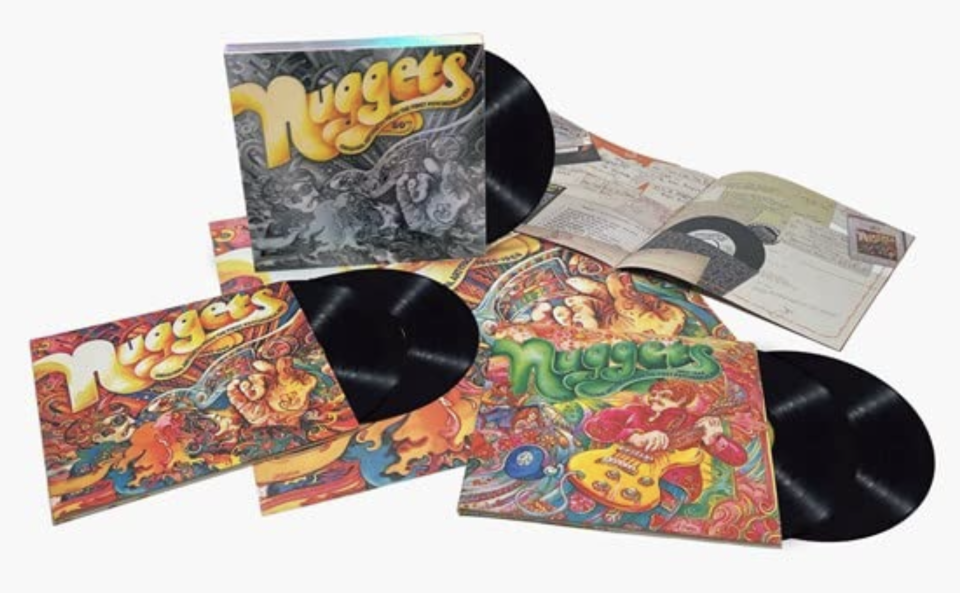
This five-LP compilation came out in a limited edition of 6,000 for Record Store Day back in April. It is being flipped for bigger bucks online, but we can vouch that stray copies can still be found in the wild at some independent music shops, as of this month. So, cancel your family vacation or New Year’s plans — you need to be attending to the matter of tracking this down. It’s an essential addition to a vinyl collection for anyone who loves the rock ‘n’ roll of the mid- and late 1960s and is curious about the material that didn’t always make it to “the canon.” And although some of the components of this RSD set can be purchased individually, the whole collection would remain in print forever if there were any archival justice.
Contained within the slipcase are three separately packaged LP sets: the original “Nuggets” compilation double-album from 1973 that first made ’60s garage-rock into an important totem of pop nostalgia; a “Nuggets Vol. 2” double-album that was planned as a sequel but never released; and a single disc titled “Also Dug-Its” that tacks on some even more obscure songs from the period. All of it has been lovingly compiled by, of course, Lenny Kaye, who doesn’t seem a day less youthful than he did when he was first cultivating this stuff 50 years ago, and who is more expert than anyone alive in drawing the seminal lines between pop, psychedelia and what had not yet been identified at the time as punk. Listening to all these tracks by the Seeds, Love, the Standells, ? and the Mysterians, Nazz, the 13th Floor Elevators, and less-than-one-hit-wonders too innumerable to mention is like entering an alternate reality that actually existed… a musical world that will have you crying 96 tears of joy. —Willman
Charlie Parker, ‘Bird in LA’
When we think of saxophonist and bebop avatar Charlie “Bird” Parker, our mind’s eye is filled with nattily-suited images from New York City in the 1940s and 1950s, along with the soaring sounds of F major signature compositions like “Scrapple from the Apple.” Yet, Los Angeles was an equally crucial part of Parker’s musical development until his death in 1955. Be it alone, with his pal, trumpeter Dizzy Gillespie, during 1945’s two-month residency at Billy Berg’s Hollywood Supper Club, or as part of Jazz at the Philharmonic (JATP), the Bird loved the sun and shadow of fantastic L.A. On a more harrowing personal note, Parker spent six months in 1946 at the Camarillo State Mental Hospital due to his rabid heroin addiction.
If this four-record-set only came with the rare Billy Berg gigs recordings, it would still be worth twice the price. The kinky ripple of “Intro Over I Waited For You into How High The Moon (Incomplete)” and the co-joined blare of “Groovin’ High” prove that bebop was the punk-rock of its moment, manically energized and bravura-packed. Things don’t settle much when Parker, pianist Nat “King” Cole and Buddy Rich attack Ray Noble’s “Cherokee” in a manic panic. If you wish to add storied jazz lore to the soaring, sonic proceedings, you can listen to the recorded 1952 rush of Parker and his taut ensemble blazing a trail across artist and bohemian king Jirayr Zorthian’s ranch in Altadena and imagine how Bird, his band and the crowd stripped naked during the party. Dig that. —Amorosi
War, ‘The World Is a Ghetto: 50th Anniversary Collector’s Edition’
When it comes to low rider Cali-cool multiculturalism, War wrote the biggest, loudest book as the Latin-tinged, fusion-funk ensemble most responsible for creating that jazzy vibe, and winding up with the top-selling pop record in the US for the year of its release. Yet, for all of its accidental hit-making savvy and stage prowess (they were the live party band to beat in Long Beach before British animal Eric Burdon came to call), by the time you get to the box’s rare bonus recording of weird studio jams, you hear a War closer to one of Zappa’s wild bands of the time or that of Miles Davis’ post-“Bitches Brew” rock-out improvisations. Plus, as recounted by co-founding keyboardist Lonnie Jordan, the whole idea of their neighborhood as a universal, wondrous playground with its own superhero named “Ghetto Man” at its front was initially devised for the theater. How very George Clinton’s Funkadelic and Sir Nose can you get? Crisply remastered for a maximum bottom end, hits such as “The Cisco Kid” and funky favorites such as “City, Country, City” sound better and fresher than ever, with “Lonnie’s Wednesday Night Jam” and harmonica player Lee Oskar’s “Latin Jam” worthy of jazz totem respect. —Amorosi
Daft Punk, ‘Random Access Memories: 10th Anniversary Edition’/’Random Access Memories: Drumless Edition’
(Note: These two separate releases are not actually a boxed set, but taken together they might as well be.) When Daft Punk launched its fourth and presumably final mission statement, “Random Access Memories,” into the atmosphere 10 long years ago, it was greeted with the kind of genre- and generation-spanning adulation that’s rare in any art form. At the time of the album’s release, the supernova of cool around Daft Punk was so pervasive — and the hits from it, particularly “Get Lucky,” were so ubiquitous — that it topped charts all around the world and won five Grammys, including album of the year.
Yet it was a drastic about-face for the pioneering duo, whose electronic and dance music of the previous 15-odd years had spawned countless influencees, and whose world-shaking 2006-7 tour basically spawned EDM. Fans expecting another electronic masterpiece instead they got a deliberately retro album that intentionally used the technology and recording techniques of the ‘70s and ‘80s to evoke the pristine, perfectionist grooves of Michael Jackson, Chic, Steely Dan, Fleetwood Mac and others. It has orchestras, choirs and a battery of top-notch musicians, most notably pioneering Chic guitarist Nile Rodgers and drummer Omar Hakim. For all its success and adulation at the time, “Random Access Memories” is a challenging and often-contrarian album, and these two re-releases lay out the roadmap to the final version: unfinished instrumentals, alternate arrangements, composites of unused parts or even isolated elements, like choirs or orchestras (the gorgeous middle section of “Touch” is now its own song). And while the literally “Drumless Edition” does feel like another deliberately contrarian move from the duo, most fascinating is what is revealed by stripping away the percussion: the beautifully mathematical textures of their melodies, the sweep of the orchestral sections, and the effortless brilliance of Rodgers’ guitar playing. These editions of “Random Access Memories” not only presents the album’s brilliance and flaws in a more dramatic light, we now have the added context of the sketches, treatments and abandoned experiments that helped make it what it is: one of the greatest albums by one of the most important and influential artists of its era. —Aswad
Fun Boy Three, ‘The Complete Fun Boy Three’
When vocalist-lyricist Terry Hall passed away in 2022, the first thing that came up in the obits was his revolutionary entry into post-punk ska revivalism and the Specials. Rightly so, too. From his dryly deadpan voice to his haunting, socio-political co-writes with keyboardist Jerry Dammers such as “Man at C&A,” Hall was the rightful center of one of Great Britain’s most dynamic, multi-cultural ensembles. But make no mistake, Hall and his fellow singing Specials Lynval Golding and Neville Staple were more than just ska rude boys.
As the 1980’s loomed, Fun Boy Three managed to create its own, genuinely weird, electronically-induced, world music sense of production technique and pop songcraft starting with 1981’s “The Lunatics (Have Taken Over the Asylum).” From there, everything that Hall and his fellow Fun Boys touched turned to gold, including recordings produced with and for Bananarama such as “T’Ain’t What You Do (It’s the Way That You Do It)” and “Really Saying Something,” to say nothing of Hall’s most-famous co-write, “Our Lips Are Sealed” with the Go-Go’s’ Jane Wiedlin. The 5 CD + 1 DVD “Complete Fun Boy Three” box set provides everything silly and sinister sounding from the trio including live versions, demos, appearances on the BBC’s “Top of the Pops” and more — the better to see Hall’s pineapple-sprouting hairdo. —Amorosi
Devo, ’50 Years of De-Evolution: 1973-2023′
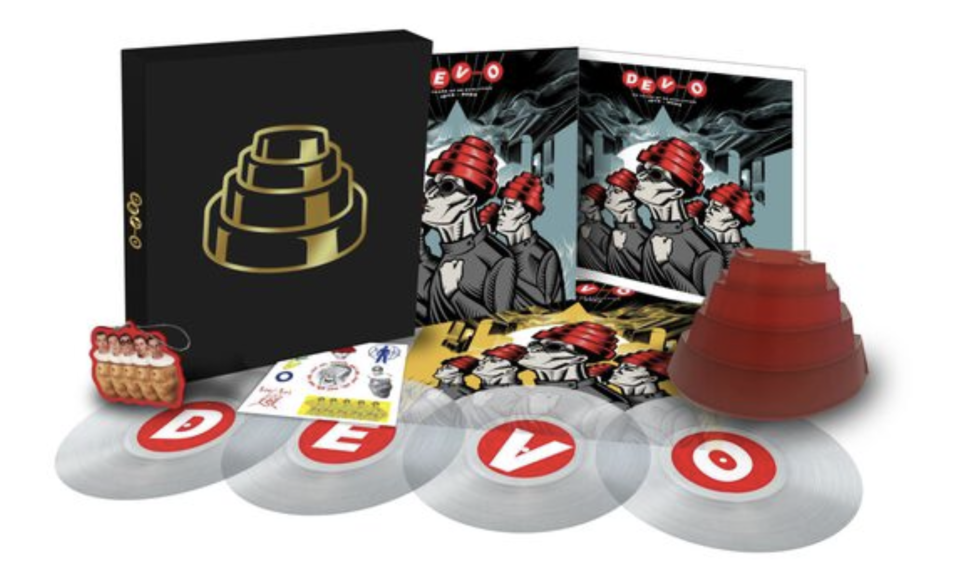
So many things have devolved over the last 50 years, but beauty in the packaging of boxed sets is not one of them. At least this four-LP Devo package provides some evidence that physical media is still peaking, everything we might know to the contrary. ’50 Years of De-Evolution: 1973-2023′ may not be a must for every Devo fan, since all of the material has been previously released, even the pre-Warner bros. rarities. But it’s one of those assemblages that just feels good in your hand as a fetish item, on top of being the best top-to-bottom compilation of the band’s work to date. This is also available in unboxed two-CD form, for the budget-conscious, it should be mentioned. And at this date, the 3,000-copy vinyl version may not be easy to find, since it’s already sold out on the Rhino webstore. But you’re going to want the LP kahuna, if you can get it. Within the nicely embossed slipcase are two distinctly packaged, clear-“colored” double-albums, each of which offers a separate chronological sequence of songs, dating from 1974 demos to the group’s final comeback album in 2011. Both collected sets offer a trip down memory lane to the time when pop and the avant-garde suddenly collided in a kind of dystopian wonderment, and the age of boogie gave way to Booji Boy. To embrace the consumerism and seek out this collectible is to truly experience an uncontrollable urge. —Willman
Best of Variety

